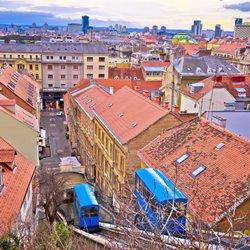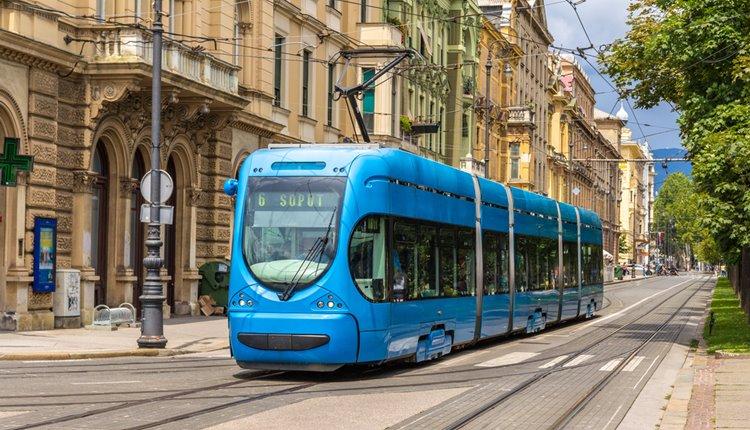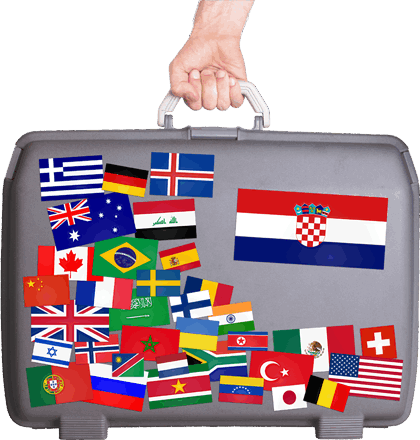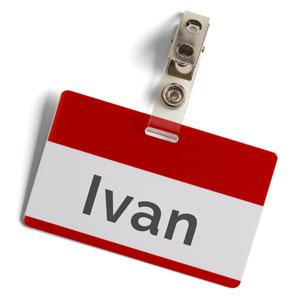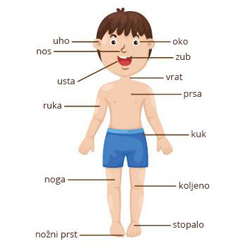The short history of trams in Zagreb
The tram tramvaj ride is the main form of transportation in Zagreb. Trams, known for their blue colour, were introduced in 1891. The first trams were pulled by horses and there were ten closed and six open trams to start with. In twenty years, the number of trams grew to 38. In 1910, Zagreb got it's first electric trams. Today's public transport fleet consists of several types of trams of varying ages from different manufacturers. There are modern, low-end trams, as well as older trams which seem to be a hundred years old. The diversity of trams is all part of Zagreb's charm. Citizens of Zagreb (zagrepčani) love their trams so they even came up with various nicknames for different types of trams, depending on the country of their origin or their shape: Đuro (named after a factory that made them), Bik (translates to bull, since they were stronger than the older models), Čeh (Czech, after the country where they were produced), Katica, Genšer (named after Hans-Dietrich Genscher, former German Minister), Zeko (bunny)...
Mirogoj's tram accident occurred on October 31, 1954 in Zagreb and is one of the biggest tram accidents in the world. The tragedy happened on the old, steep stretch of the Mirogoj, and nineteen passengers were killed, while thirty-seven were severely injured
Tram lines
At present, the Zagreb tram network is made of 116.3 km of tracks, with 15 daily and 4 night lines (running from 00:00 to 4:00). All trams are marked by a number on the front and rear of the tram and on the right side of the tram. There are several trams running on each line at once and they follow a certain timetable. Still, keep in mind that in Croatia one can't always rely on the timetable. Delays are common, but that gives you extra time to enjoy the architecture of the city while waiting for the next tram! Thankfully, many tram stops have digital displays telling you when the next tram is about to arrive.
Cost and types of tram tickets
The whole tram network is contained within one zone and there are several types of travel tickets (valid for buses and the funicular as well!):
There are day tickets (jednodnevna karta), which costs 30 kuna, and multiple day tickets
(višednevna karta), valid for 3 (70 kuna) or 7 days (150 kuna) which are ideal for tourists staying in Zagreb for a few days. You can buy them at one of the many Tisak newsstands (kiosk).
Single tickets (pojedinačna karta) are one-way travel tickets that must be validated (poništena) when entering the tram. You must validate your ticket at the first or last ticket reader on the tram, the middle ones don't have the ability to validate tickets. They are valid for 30 / 90 minutes and cost 4 / 10 kuna. They can be bought at the Tisak kiosk or on the tram from the driver. If you have the exact change ready when buying a single ticket, you'll make life easier for both yourself and the driver. Prepaid Card
(pretplatna karta) is an annual or monthly pass for those who use public transportation daily.
Bus (autobus) transport in Zagreb
Bus service in Zagreb has been running since 1927 and today it consists of 134 bus lines (78 in Zagreb proper and 56 connecting the suburbs and the surrounding towns with the city center). The ticket system is the same as for the trams.
The longest bus line is about 40 km long (line 311 Zagreb Gl. Station-Left Štefanki), while the other suburban lines are about 20 km long.
"Old Lady" (Stara dama) is one of many points of pride of the Croatian capital. It connects Zagreb's Upper (Gornji grad) and Lower Town (Donji grad). The lower station is located on Tomićeva street (which starts on Ilica), and the upper station is located on Strossmayer's promenade, at the foot of the Lotrščak tower. With a 66m long strip, it's also known as the shortest public railroad in the world (although some other towns also claim to have the shortest funicular).
It officially started running on October 8th, 1890 which makes it the oldest form of public transport in Zagreb. Other than its original steam engine being replaced by electric power in 1934, the funicular has retained its original appearance and construction structure. It's a famous tourist attraction but tired locals use it often as well!
Getting around Zagreb otherwise
The most convenient way to get around the town is by a taxi (taksi) or, since 2015, Uber. The first taxi in Zagreb appeared on Ban Jelačić Square on June 11, 1901. Today, there are over a thousand taxi vehicles from different concessionaires in Zagreb. The most famous ones are Radio taksi Zagreb, Cammeo and Eco Taxi. Their prices are pretty much similar. Compared to a taxi, Uber as a service is considerably more affordable.

